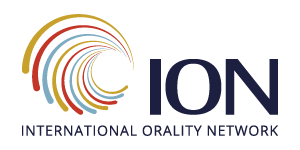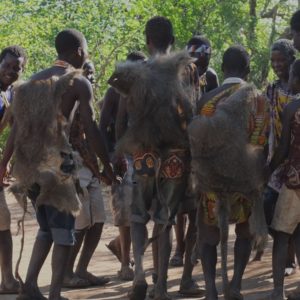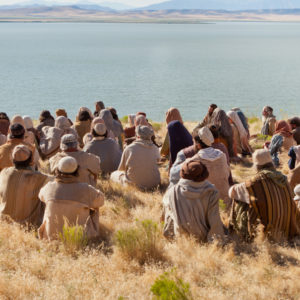Communication skills in an oral culture are alien to the highly-literate, well-educated westerner. Most technical specialists, who go to “developing” countries tend to be this type of westerner.
The natural human oral orientation has usually been lost to them, due to the literate and analytical focus of western educational processes. This puts westerners at a terrible disadvantage for meeting the highly developed, sophisticated oral cultures they unwittingly find themselves within, in the majority of the world’s cultures and countries.
Yet the new western generation is riding the crest of a new wave that began over two decades ago. Following the media revolution of the 60s, the world has changed rapidly into a new era that has been termed Post-Literate. Most of the world’s peoples are not literate communicators. More and more of the so-called “literate” or technological world are also oral.
Pre-literate and Post-literate Orality
We are in a period of history and technology where much of the world’s population, perhaps a majority, are still in the pre-literate oral communication era, while the west, and particularly the US and Canada, are in the post-literate information age. In the post-literate world, learners have a base of literacy, but their primary means of learning have shifted back to oral and aural media (if in fact they were ever fully indoctrinated into literate forms of learning), but the media are new.
The current western generation learns and processes in terms of media such as television (drama, news, music, interactive graphics or text), radio (music, news, discussion), telephone (often in conjunction with TV or radio), computer (which involves basic literacy, but more visuals, graphics and click-skills), visual and aural media, often multiplexed, as all the media merge. In this post-literate society, writing and reading are still of value, but only as they facilitate manipulation for the other media.
Music
Music is a common base across all these media, taking us back to our primal universal human cultural roots. Music is also a primary vehicle for communication, history, worldview, etc., in pre-literate societies. ALL peoples have some form of oral art like music or poetry. Illiterate peoples are highly skilled in memory and music and even rhetoric. Westerners appear unskilled in those terms.
Bridging the Gap
There are ways to bridge these gaps. Orality approaches have addresses this. Much has been discovered in recent years about oral cultures, oral methods of transmitting cultural information and oral-culture formats of education and communication.
All cultures tell stories. Oral forms are found in all cultures, though the specific formats vary. Even literate peoples enjoy oral stories. Movies and TV are largely story formats.
These visual media, and to some extent also music formats as storytelling forms, have had a part in “liberating” the western literate societies from the bondage of literacy. The current post-literate generation has a focus on experience, interaction and relational values.
Logical Processes
This affects logical processes. Thus the post-literate generation is less “linear” in thinking processes, even in the West. Logic is more associative and dynamic, creative and imaginative, not so much deductive and sequential.
This makes them very like pre-literate oral communicators. Oral forms now offer a new commonality to bridge the literate-oral gap and bring the westerner closer to the rest of the world.
Storytelling formats and structures have been studied in many of the world’s cultures. Western universities have programs training cross-cultural communicators in oral communication. There are now accredited programs for training oral learners using totally oral methods — no reading and writing involved!
Orality and Worldview
Orality goes hand in hand with indigenous (and indigenized) communication formats and worldview investigation. If cultural change is involved, attention must be given to these factors.
New choices, new patterns of life — these will not result if the format of change remains an outsider “technology.” Even modern “third-world” governments have overlooked this in trying to introduce change in their own countries.
A critical area is the sense of reality. The western, linear thinker has a high cultural value on factual knowledge. This affects the priority in learning, planning and the underlying sense of truth. Truth is seen as consisting in facts — specific descriptive statements about an objective, perceivable reality. Knowledge is the accumulation of facts.
The oral culture, on the other hand, places priority on relationships, which produces a concept of dynamic truth, not a focus on facts. The dynamic, relational concept of truth involves what we might call functional knowledge. This focuses on relational skills, and truth is seen in terms of personal integrity and fulfillment of relational and family obligations.
The pre-literate, relational thinker, with a focus on dynamic truth and functional knowledge, has a high facility of memory and an active skill of visual association, which we might call oral literacy. The post-literate uses visual skills to process images and activities more than writing. And while the post-literate has an active attitude toward interactive visual media, formal skills in traditional literacy may be weak.
The western post-literate places a higher value on relationships and interaction, similar to oral traditional cultures. Personal experience is more important than objective fact and established knowledge.
Post-literate Technology
The post-literate technology assumes traditional literacy skills, but the typical post-literate is a passive literate. The literacy skills needed for the visual dramatic portrayal on the TV, or a music video, for example, are more for perception, that is reading, than for a high skill in self-expression, associated with writing or public speaking. Literacy is assumed and even necessary, but is not in focus, serving more as an adjunct to the event oriented, dynamic visual world of interactive media.
Generation X and Y individuals may not feel it is important or have patience to give a lot attention to spelling or style. General understanding and dynamic communication is of primary value. This makes them more like dynamic, relational members of oral cultures.
The post-literate tends to favor an oral-aural learning style, which complements this visual event literacy. Thus the post-literate is more similar to the pre-literate in some ways than the literate westerner.
Orality Formats
There are modern media technologies compatible with the orality worldview. I worked in a media studio in Africa, which in the 1960s (before I came) and 70s (while I was there), was producing oral materials, such as tape dramas in local languages. Several series of topics were developed for indigenous churches.
A basic story was laid out and explained to the actors, just a group of members from the local church. They would go over the story and it would blossom into their African version of a poignant parable or other Bible story.
The contents and format of the drama was extemporaneous, developed on the spot by the local-culture participants. Oral communicators are great improvisers, and have great insight into the interpersonal interactions and characterizations in a drama, be it serious or comedy.
Several series were produced in music and drama or semi-drama dialogue format. Topics included basic Bible teachings, moral questions and leadership skills. Traditional music was used as lead-in and background (like the old US radio dramas — can you remember back that far?). These were distributed to churches, schools and homes on cassette tapes. They were also broadcast by the government’s national radio stations.
This drama and music format was also used in regular radio programs, on medium wave and shortwave. Dialogue, question-and-answer and other “discussion” formats from the western context are also close to the oral culture communication formats. Productions also included drama and puppet stories on TV and docudrama on faith in life, highlighting prominent people in the country.
Bridging the Technology Gap
These are some easily adaptable formats that may bridge the gap for the western media communicator into the world of the oral communicator. In contrast to stereotypes and prejudices some segments hold against Christian missionaries, indigenous communication formats and educational methods in many cultures have been studied and developed by Christian teachers and media specialists.
Leadership training formats in Christian schools and missions of the twentieth century attempted to bypass the western limitation of “schooling” as a way of learning or to the introduction of desired aspects of international and western technology into a mostly non-literate society.
Serious attention has been given to this concept of orality, which became a major focus in the last 20 years of the 20th century, so that it is now in the forefront of considerations for cross-cultural communication.
In the 1990s, this blossomed into a new vista of oral leadership training for oral communicators, an exciting new arena of orality and communication! This is now being avidly explored and developed by many American college and graduate-level institutions.
This offers to western communicators the challenge to recover their ancient heritage and remaster the world of orality, rhetoric, story-telling, music, poetry and epic narration.
This is the way the majority of the world’s population still transmit their riches of culture, history, faith and cultural identity. Techniques have now been developed (or are under development) for enabling the western, educated communicator to master these venerable human orality formats.
Orality, the Cultural Unifier
The best thing about orality-focused formats and media is that these also communicate powerfully to the literate world. They likewise communicate well to the post-literate generation. Production formats may differ, since the western viewer is used to fast cuts, multiple images, and incongruities, whereas the non-literate or literate viewer may be more comfortable with linear, more natural cuts and actions. This is a matter of technique and style, however, not of principle.
The challenge for the foreign communicator is how to get inside the cultural worldview perspective, how to cast the desired communication in understandable terms inside the language, thought-forms and cultural frames of reference of the cultural audience. Even western-oriented governments appear to be struggling with this in communicating to their own oral-culture citizens.
A critical aspect of this is the oral communication perspective, and the oral media formats of most peoples of the world. Therefore a study of oral cultures and their communication formats will be highly beneficial to the media producer in communicating cross-culturally.
« Developing Leaders… From The Trail Oralities & Literacies – Chapter 8 &#...»







